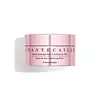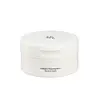What's inside
What's inside
 Key Ingredients
Key Ingredients

 Benefits
Benefits

 Concerns
Concerns

 Ingredients Side-by-side
Ingredients Side-by-side

Rosa Damascena Flower Water
MaskingDipropylene Glycol
HumectantGlycerin
HumectantPropanediol
SolventTrehalose
HumectantTriethylhexanoin
MaskingC14-22 Alcohols
Emulsion Stabilising1,2-Hexanediol
Skin ConditioningHydrogenated Vegetable Oil
EmollientPEG/PPG/Polybutylene Glycol-8/5/3 Glycerin
HumectantDicaprylyl Carbonate
EmollientPolyester-7
Skin ConditioningCetearyl Olivate
CI 77891
Cosmetic ColorantSorbitan Olivate
EmulsifyingStearyl Heptanoate
EmollientGlyceryl Stearate
EmollientPEG-100 Stearate
C12-20 Alkyl Glucoside
EmulsifyingNeopentyl Glycol Diheptanoate
EmollientMica
Cosmetic ColorantStearyl Caprylate
EmollientAmmonium Acryloyldimethyltaurate/Vp Copolymer
Silica
AbrasiveCarbomer
Emulsion StabilisingCalophyllum Inophyllum Seed Oil
AntimicrobialOenothera Biennis Oil
EmollientSodium Hyaluronate
HumectantXanthan Gum
EmulsifyingRosa Canina Fruit Oil
EmollientTocopherol
AntioxidantHelianthus Annuus Seed Oil
EmollientPhytic Acid
Sodium Hydroxide
BufferingRosa Centifolia Flower Extract
AstringentCaprylic/Capric Triglyceride
MaskingRubus Idaeus Leaf Cell Culture
Skin ConditioningChlorphenesin
AntimicrobialGeraniol
PerfumingRosa Damascena Flower Water, Dipropylene Glycol, Glycerin, Propanediol, Trehalose, Triethylhexanoin, C14-22 Alcohols, 1,2-Hexanediol, Hydrogenated Vegetable Oil, PEG/PPG/Polybutylene Glycol-8/5/3 Glycerin, Dicaprylyl Carbonate, Polyester-7, Cetearyl Olivate, CI 77891, Sorbitan Olivate, Stearyl Heptanoate, Glyceryl Stearate, PEG-100 Stearate, C12-20 Alkyl Glucoside, Neopentyl Glycol Diheptanoate, Mica, Stearyl Caprylate, Ammonium Acryloyldimethyltaurate/Vp Copolymer, Silica, Carbomer, Calophyllum Inophyllum Seed Oil, Oenothera Biennis Oil, Sodium Hyaluronate, Xanthan Gum, Rosa Canina Fruit Oil, Tocopherol, Helianthus Annuus Seed Oil, Phytic Acid, Sodium Hydroxide, Rosa Centifolia Flower Extract, Caprylic/Capric Triglyceride, Rubus Idaeus Leaf Cell Culture, Chlorphenesin, Geraniol
Cetyl Ethylhexanoate
EmollientCaprylic/Capric Triglyceride
MaskingPEG-20 Glyceryl Triisostearate
EmollientSynthetic Wax
AbrasivePEG-10 Isostearate
EmulsifyingLactobacillus/Soybean Ferment Extract
Skin ConditioningHippophae Rhamnoides Oil
EmollientOryza Sativa Bran Oil
EmollientOryza Sativa Seed Water
AntimicrobialAvena Sativa Meal Extract
SoothingCoix Lacryma-Jobi Ma-Yuen Seed Extract
Skin ConditioningOryza Sativa Extract
AbsorbentWater
Skin ConditioningSorbitan Sesquioleate
EmulsifyingGlycerin
HumectantPropanediol
SolventButylene Glycol
Humectant1,2-Hexanediol
Skin ConditioningCaprylyl Glycol
EmollientEthylhexylglycerin
Skin ConditioningCetyl Ethylhexanoate, Caprylic/Capric Triglyceride, PEG-20 Glyceryl Triisostearate, Synthetic Wax, PEG-10 Isostearate, Lactobacillus/Soybean Ferment Extract, Hippophae Rhamnoides Oil, Oryza Sativa Bran Oil, Oryza Sativa Seed Water, Avena Sativa Meal Extract, Coix Lacryma-Jobi Ma-Yuen Seed Extract, Oryza Sativa Extract, Water, Sorbitan Sesquioleate, Glycerin, Propanediol, Butylene Glycol, 1,2-Hexanediol, Caprylyl Glycol, Ethylhexylglycerin
 Reviews
Reviews

Ingredients Explained
These ingredients are found in both products.
Ingredients higher up in an ingredient list are typically present in a larger amount.
1,2-Hexanediol is a synthetic liquid and another multi-functional powerhouse.
It is a:
- Humectant, drawing moisture into the skin
- Emollient, helping to soften skin
- Solvent, dispersing and stabilizing formulas
- Preservative booster, enhancing the antimicrobial activity of other preservatives
This ingredient is an emollient, solvent, and texture enhancer. It is considered a skin-softener by helping the skin prevent moisture loss.
It helps thicken a product's formula and makes it easier to spread by dissolving clumping compounds.
Caprylic Triglyceride is made by combining glycerin with coconut oil, forming a clear liquid.
While there is an assumption Caprylic Triglyceride can clog pores due to it being derived from coconut oil, there is no research supporting this.
Learn more about Caprylic/Capric TriglycerideGlycerin is already naturally found in your skin. It helps moisturize and protect your skin.
A study from 2016 found glycerin to be more effective as a humectant than AHAs and hyaluronic acid.
As a humectant, it helps the skin stay hydrated by pulling moisture to your skin. The low molecular weight of glycerin allows it to pull moisture into the deeper layers of your skin.
Hydrated skin improves your skin barrier; Your skin barrier helps protect against irritants and bacteria.
Glycerin has also been found to have antimicrobial and antiviral properties. Due to these properties, glycerin is often used in wound and burn treatments.
In cosmetics, glycerin is usually derived from plants such as soybean or palm. However, it can also be sourced from animals, such as tallow or animal fat.
This ingredient is organic, colorless, odorless, and non-toxic.
Glycerin is the name for this ingredient in American English. British English uses Glycerol/Glycerine.
Learn more about GlycerinPropanediol is an all-star ingredient. It softens, hydrates, and smooths the skin.
It’s often used to:
Propanediol is not likely to cause sensitivity and considered safe to use. It is derived from corn or petroleum with a clear color and no scent.
Learn more about Propanediol